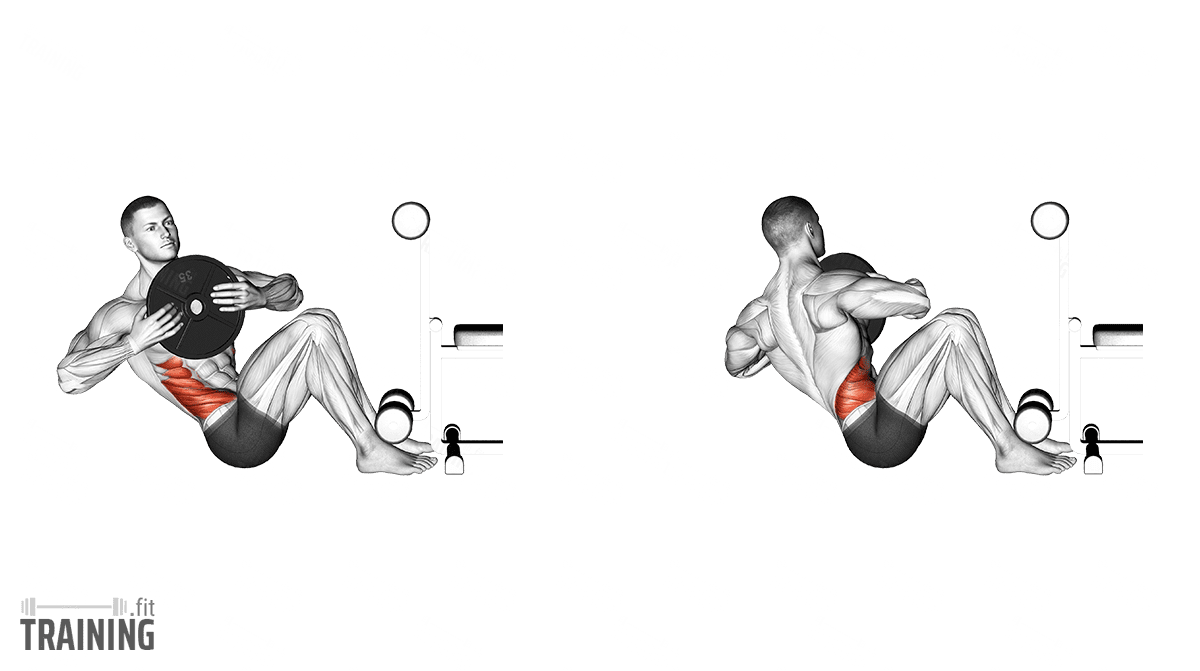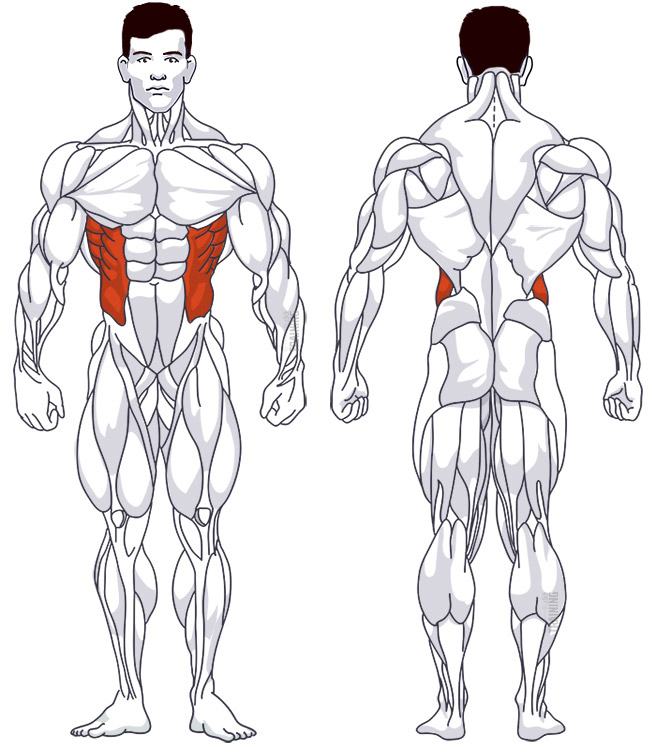Abdominal Twist
Isolation exercise, Free weightsOverview

Main muscles
- Abdomen: External oblique abdominal muscle
(Musculus obliquus externus abdominis)
Training plans
Abdominal Twist is a suitable substitute for similar exercises in or as a supplement to various training plans.
Abdominal Twist: Basics and alternatives

Involved main muscle groups:
Abdominal Twist
The Seated Abdominal Twist, also known as the Russian Twist, is one of three exercises that target the lateral abdominal muscles. The other two variations are the Abdominal Twist in a standing position and the Abdominal Twist on a machine. In the seated Russian Twist, you’ll rotate your upper body from side to side in a controlled motion.
You can easily do the seated Abdominal Twist at home without any equipment. If you want, you can also use extra weight to increase the intensity.
Proper Execution
The Abdominal Twist is an excellent exercise for targeting the lateral abdominal muscles and is relatively simple to master. Remember to pay attention to your leg and foot position as described below.
If you’re using extra weight, pick one that’s not too heavy and can be held securely in the air even after multiple repetitions.
Video Instruction
Step-by-Step Guide
Sit on the floor with your legs in front of you. Your knees should be about level with your upper abdominal muscles. Make sure the soles of your feet touch the ground.
Lift the weight (if you’re using one) with both hands over your knees. If you’re not using a weight, extend your hands or cross them in front of your chest.
Pull your shoulder blades back, lift your chest, and lean back a bit. You’ll feel the tension in your core. However, don’t lean back too far. Keep your back straight — no hunching allowed.
Rotate your arms and upper body in one direction. The weight in your hands should move down slightly but never touch the ground at any point.
Upon completing the movement, rotate your upper body towards the other side. You may choose to do so directly or pause briefly in the middle to intentionally sustain tension in your core.
Common Mistakes
A frequent mistake people make while performing the Russian Twist is lifting their feet off the ground. Some believe that hovering the legs will better strengthen the core. However, you can achieve enough tension in your abdominal muscles by leaning your upper body slightly backward and keeping your feet on the ground. This also provides better stability and is healthier for your spine.
When using extra weight, having your feet on the ground helps stabilize your body. This also prevents you from using momentum to initiate the movement, as your feet on the ground provide the necessary resistance.
Also, ensure the extra weight isn’t too heavy, so you don’t have to put it down on the ground at the end of the movement. Instead, you should effortlessly hold the weight in the air throughout the set. If that’s not possible, choose a lighter weight and do more repetitions.